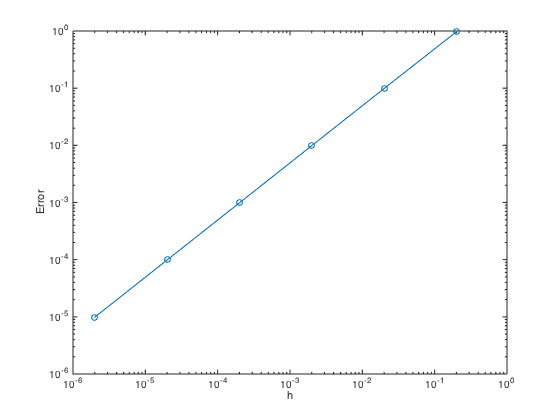Lecture1. Things to do in class.
Contents
Number 1
clear all; close all; % clear all to start fresh % Note: n equal spacing means n+1 points % as an example let use use a = -1 and b = 1 a = -1; b = 1; n = 10; h = (b-a)/n; one = ones(n+1,1); % create a column vector of size n+1 by 1 of ones D = spdiags([-one one],[0 1],n+1,n+1); D(end,end-1) = -1; D(end,end) = 1; % Modify last row (one-sided weights) D = (1/h)*D; % Don't forget the 1/h factor spy(D) % Plot the structure of the sparse matrix
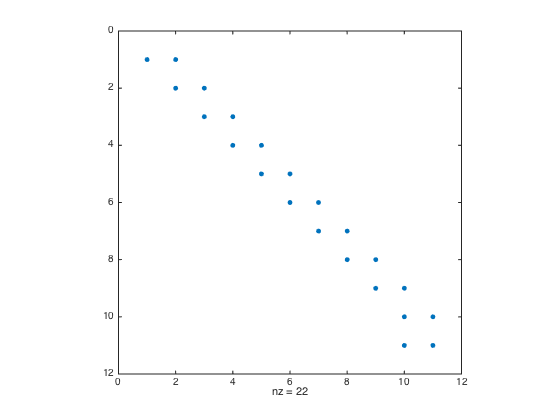
Number 2
format long e % format number in long format u = @(x) exp(-x.^2); % Define the function ux = @(x) -2*x.*exp(-x.^2); % Define the exact derivative of the function x = linspace(a,b,n+1).'; % Create n+1 equally-spaced points in [a,b] uux = D*u(x); % Compute numerical derivative err = norm(uux-ux(x),Inf) % Compute infnorm (u'_num - u'_exact) figure plot(x,uux,'-*r',x,ux(x),'-b')
err =
1.960528042383842e-01
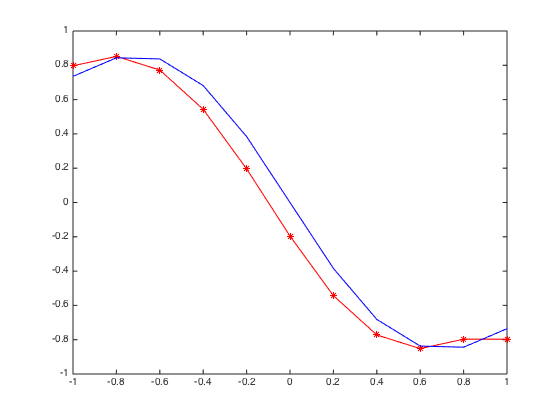
Number 3
Can you check what is the slope of the error convergence ?
n = 10.^(1:6); % Create n = 10,100,1000,10000,... h = (b-a)./n; err = zeros(length(n),1); % Pre-allocate memory to store errors for i=1:length(n) one = ones(n(i)+1,1); x = linspace(a,b,n(i)+1).'; D = spdiags([-one one],[0 1],n(i)+1,n(i)+1); D(end,end-1) = -1; D(end,end) = 1; D = (1/h(i))*D; uux = D*u(x); err(i) = norm(uux-ux(x),Inf); end figure loglog(h,err,'-o') % Plot the error in logscale xlabel('h'); ylabel('Error')
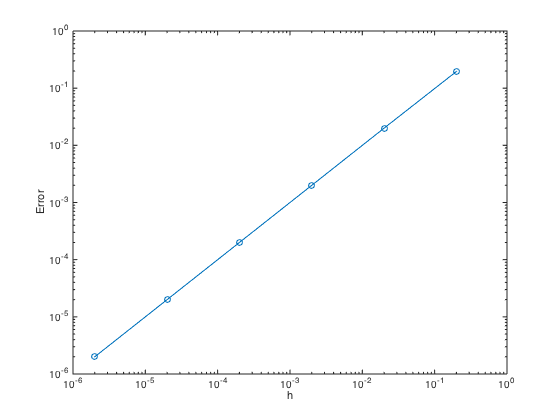
Number 4
In periodic case, x0 and xn are the same point. So, you can remove either x0 or xn
u = @(x) sin(pi*x); ux = @(x) pi*cos(pi*x); n = 100; h = (b-a)/n; one = ones(n,1); % create a column vector of size n+1 by 1 of ones D = spdiags([-one one],[0 1],n,n); D(end,1) = 1; % Wrap around the matrix D = (1/h)*D; % Don't forget the 1/h factor figure spy(D) % Plot the structure of the sparse matrix x = linspace(a,b,n+1).'; % Create n+1 equally-spaced points in [a,b] uux = D*u(x(1:n)); % Compute numerical derivative err = norm(uux-ux(x(1:n)),Inf) % Compute infnorm (u'_num - u'_exact) figure plot(x(1:n),uux,'-*r',x(1:n),ux(x(1:n)),'-b')
err =
9.866357858642535e-02
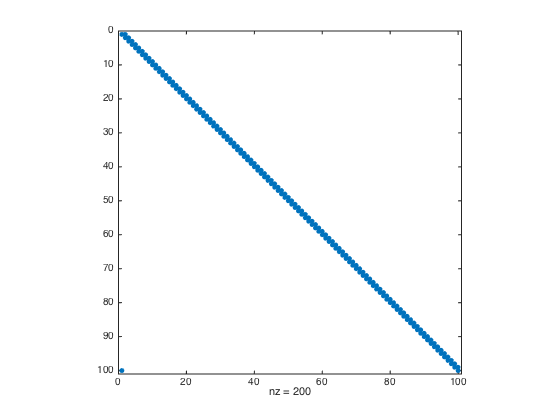
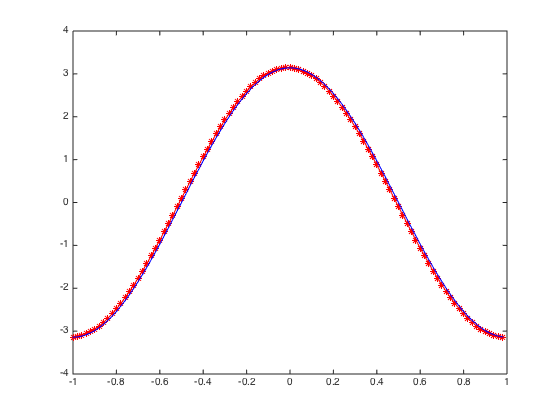
Check the error convergence of number 4
n = 10.^(1:6); % Create n = 10,100,1000,10000,... h = (b-a)./n; err = zeros(length(n),1); % Pre-allocate memory to store errors for i=1:length(n) one = ones(n(i),1); x = linspace(a,b,n(i)+1).'; D = spdiags([-one one],[0 1],n(i),n(i)); D(end,1) = 1; D = (1/h(i))*D; uux = D*u(x(1:n(i))); err(i) = norm(uux-ux(x(1:n(i))),Inf); end figure loglog(h,err,'-o') % Plot the error in logscale xlabel('h'); ylabel('Error')
